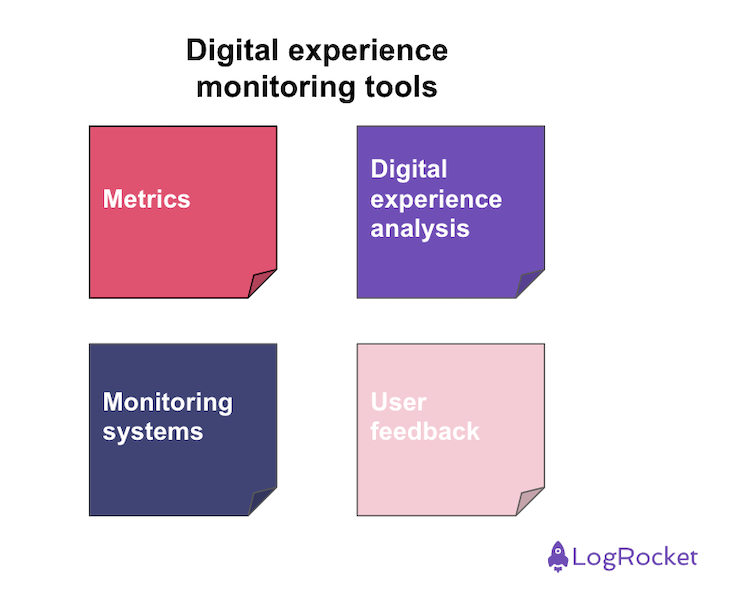I started a new job as a product manager for an online shop some years ago. During my first week, the CPO told me, “We’ve built a new website, but cannot get it live. I want you to figure out why it performs worse than our current version and how to get it live.”

I learned the team had worked on the new website for six months, and despite all efforts, they couldn’t match the performance of the current one. Back then I didn’t have robust analytics tools available to me, but I needed to solve this problem for the CPO.
When I looked at the new website, it made no sense why it performed worse than the current one. It was faster, more intuitive, and simpler. And yet, the conversion rate was 10 percent worse.
I was scratching my head until I thought about introducing a digital experience monitoring tool. Once I did, I easily solved the problem.
In this article, you will learn what digital experience monitoring is, the critical components that go into it, and the benefits of implementing it within your product.
Digital experience monitoring is a tool that helps identify issues with the user experience and offers solutions. Such issues can be related to page load time, crashes, issues with certain browsers, and increased bounce rates. It can also predict potential problems and present possible solutions.
Despite artificial intelligence advances, digital experience monitoring won’t do the job alone. This still requires human interaction, but I assure you it will make your life easier.
DEM will enable you to continuously improve your user experience, contributing to higher conversion rates.
Returning to the story I started, without DEM, I was digging into numbers and trying to uncover what was going on. I spent a lot of time trying to look at different angles. Here are some examples:
I dug into numbers and scenarios, watched screen recordings, looked at the heatmap, and was still underwater. I couldn’t identify why the new website performed worse than the current one. I felt powerless and didn’t know what to do. After weeks of working on it, I found minor improvements, but still couldn’t move the needle.
Once I started using digital experience monitoring, the problems surfaced, and the a-ha moments took over. Here are some of the findings:
On top of knowing our issues, we learned potential solutions for them. That enabled us to fix our problems and improve our conversion rate with the new website. The new website was rolled out to our whole audience in a few weeks.
DEM helps you beyond understanding the bottlenecks and places you lose users. Here are the key components:

My challenge years ago was launching a new website to match the current conversion rate. With digital experience monitoring, we surpassed that. We learned that our accessibility was weak.
For example, we didn’t have alternate text for a single image. We also learned that our performance was horrible on smartphones. Luckily, we knew the solutions and could quickly work on them.
The results of digital experience monitoring go beyond its investment. It contributes to continuously improving your user experience, user satisfaction, and consequently, higher conversion rate.
Today, applications have an endless amount of data. It’s naive to think you can look at data alone and come up with all the insights. The magic happens by transforming data into insights.
I invested several weeks trying to understand why the website performed poorly and failed to uncover the real challenges. You may blame me for that, but the digital application monitoring gave me insights in a few days that I could act on immediately.
DEM also allows you to improve how you release applications. Have you ever had a situation where everything works fine in your staging environment, but surprises take over when it makes it to production?
Well, I’ve been there more than I would like. The reason is simple: users have many ways to interact with the application, and even with the most modern automated tests, users will surprise you.
Digital application monitoring can record user data, which can be integrated with your release process to enhance the tests and reduce the chances of unpleasant surprises.
This can prevent a problem that would hurt your reputation. A smooth and pleasant user experience is necessary to remain relevant in a challenging market.
Digital experience monitoring isn’t a silver bullet to solve all your application problems. Product managers need to set it up correctly and know what matters and what doesn’t.
To do this, you can use the following tools:

Digital experience monitoring can be a game-changer for improving product quality. I still see too many products with poor user experience.
With that said, I still don’t believe digital experience monitoring is the solution alone. Human expertise is highly valuable to set it properly and analyze the insights gathered.
Use digital experience monitoring to:
Remember, at the end of the day, you’re the driver, not the passenger. Use tools to empower you to achieve more, not to define how you work.
Featured image source: IconScout
LogRocket identifies friction points in the user experience so you can make informed decisions about product and design changes that must happen to hit your goals.
With LogRocket, you can understand the scope of the issues affecting your product and prioritize the changes that need to be made. LogRocket simplifies workflows by allowing Engineering, Product, UX, and Design teams to work from the same data as you, eliminating any confusion about what needs to be done.
Get your teams on the same page — try LogRocket today.

A fractional product manager (FPM) is a part-time, contract-based product manager who works with organizations on a flexible basis.

As a product manager, you express customer needs to your development teams so that you can work together to build the best possible solution.

Karen Letendre talks about how she helps her team advance in their careers via mentorship, upskilling programs, and more.

An IPT isn’t just another team; it’s a strategic approach that breaks down unnecessary communication blockades for open communication.